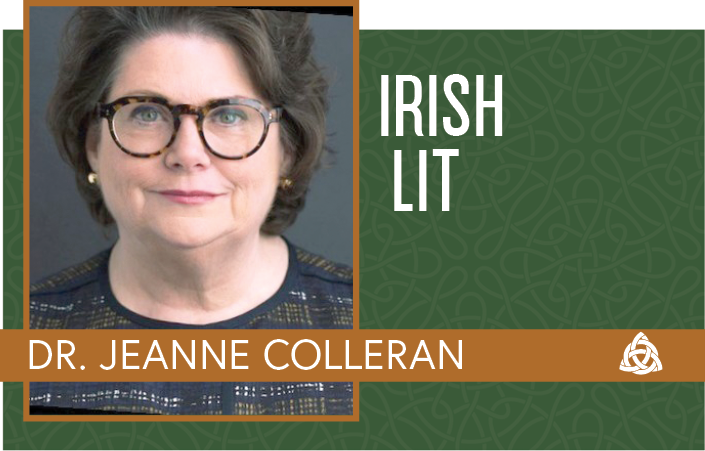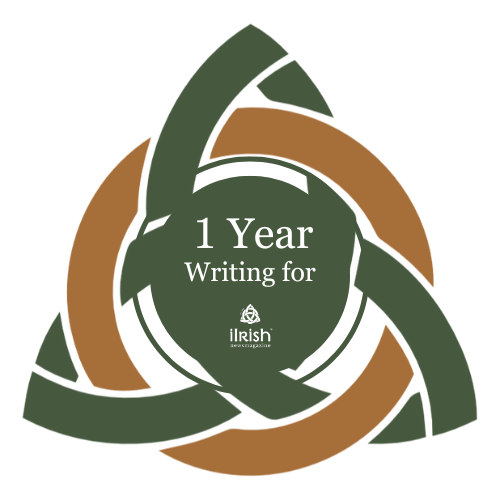In my first column for iIrish a year ago, I wrote that I hoped to bring more attention to various Irish art and literary festivals and performances that readers may wish to attend—or plan to attend if the event is an annual one. I have just returned from Ireland after a week of pure happiness – thanks to my dear husband’s birthday gift to me – immersing myself in all things literary: a writing course with the brilliant Claire Keegan; a boutique literary festival called Writing by the Sea, both in Wexford; and back to Dublin to see two plays at the annual Dublin Theater Festival; take in new and permanent collections at the Museum of Irish Literature and the Hugh Lane Gallery; and revel in the Seamus Heaney exhibit at the Bank of Ireland.
Here’s my report, but first this point: I put together (I know I should say “curated” like an “influencer”) this itinerary myself, and you can also make your own. What is required, of course, is an abiding interest in the greatest of Irish arts – literature (or perhaps the second greatest if, like Claire Keegan, you think horsemanship is a premier artform).
Literary Festivals
Literary festivals happen in Ireland all year-round. Take a look at the website https://www.writing.ie/resources/writing-festivals-in-ireland/ and you’ll find a month-by-month list; hardly exhaustive, but a good start.
The one I attended, Write by the Sea, takes place in a fishing village of about 320 residents in Kilmore Quay; this year, the festival featured the inestimable John Banville, Booker Prize winner of The Sea, hailed as Ireland’s Proust and self-described as Henry James’ acolyte.
Banville is Wexford born, as is Colm Toibin, from Enniscorthy, and you can visit the places in the novels as surely as you can walk Joyce’s Dublin. While in Kilmore Quay, sitting by the shore, I perused with my new Tessa Hadley novel as she also spoke at the festival, and I looked out to the Saltee Islands.
Had I another day, I would have taken the ferry to pay my respects to the grey seals basking and breeding in the autumn months: the 500-pound bulls and 200-pounds cows all dog-nosed and happy to be in protected waters with their white-furred pups. You can also easily see the Irish cousins of the Galapagos’ red-footed or blue footed boobies, called gannets, imposing with their six-foot wingspans. And because all things natural and literary root themselves in each other, its fun to know that the Spanish named these birds “bobos” or “clowns,” which slipped into the comical “boobies,” both bird and word silly and amusing.
I’ll save my account of what I learned in Claire Keegan’s workshop for a separate piece, save to say that Small Things Like These is as compelling a Christmas story as Dickens’ Carol or Joyce’s The Dead. You should get and give it as a gift and read it immediately and again.
The film will be out, though not as I write this, and then Keegan’s work will receive even more of the attention it deserves. So, if you also wish to hear a master literary craftsperson discuss writing, as I did, you can consult announcements made by a number of groups.
Poetry Ireland
https://www.poetryireland.ie/whats-on/. Subscribing to The Stinging Fly (https://stingingfly.org/about-us/) is another, the magazine focuses on emerging writers, but it also offers online seminars and news of literary events. If you wish to listen to great readings or commentary, the Arts Council of Ireland offers suggestions for podcasts: https://www.artscouncil.ie/News/Literature/Literature-Podcasts
Dublin Theatre Festival
One of the most highly regarded international theater festivals, I chose two productions at the Dublin Theatre Festival and was not disappointed in either. The Abbey mounted Grania, a 1912 play by Lady Augusta Gregory, never previously performed there despite the fact that Gregory worked with Yeats to establish the Abbey as the national theater.
Gregory called her play a tragedy, since Grainne’s engagement to the powerful Fionn is disrupted by her instantaneous attraction to his clansman Diarmud. But wait – she remembers she had actually seen him before, when she was a young girl.
Fionn, furious, banishes them, and they wander for seven years as Diarmud struggles between his love for Grainne and his loyal oath to Finn not to touch her. No modern production can resist lampooning bromance over romance, and so when they are found (Fionn, too, has obsessed and languished), Grainne’s annoyance that they men greet each other heartily makes her loss more farcical than sorrowful.
Most of the audience was with her when she stomps away: at least one of these guys was supposed to give her a house and a baby. It didn’t happen.
Druid Festival
Galway’s Druid brought The House, by Tom Murphy, to Dublin, an enraged tale of desire and dispossession. Murphy was born in Galway, and the Druid Theater dedicated one of its plays’ cycles to his works, reinforcing his reputation as one of the greatest Irish playwrights.
This play, obviously indebted to The Cherry Orchard, centers on the loss inflicted by economic disparity and forced emigration, and on homecomings, where the revenant can never recoup what has changed, disappeared, or been lost.
It is a play about life’s great (and avoidable and sometimes culpable) swindling, the bait and switch of hoping that the time, opportunity, and love taken away might be re-gained or re-purchased. It is not clear whether The House will come to the U.S., but Marie Mullen, its star, sometimes appears in plays at the Irish Rep in New York, and she is always brilliant.
Museum of Literature
I bookended my trip with two visits to the Museum of Literature Ireland, opened in 2019 in Newman House on Saint Stephen’s Green as a partnership between National Library of Ireland and University College Dublin. (You can nip into Cardinal Newman’s chapel next door.)
Of course, I wanted to see Copy 1 of Ulysses, inscribed to Harriet Weaver, and other parts of their many Joyce’s holdings (it’s called MOLI, after all), but the reason for two visits was the immersive installation. The three-floor museum, one for “place,” one for “voice,” one for “inspiration,” has won architectural accolades, and while it offers changing exhibits, it is the room with the “riverrun of language” that most fascinated.
“Sound showers” of writing in Irish and English, with different accents from different times, rain down on the listener in eight columns from ceiling speakers, and fragments of texts dance across a large screen. An ancient Gaelic poem, a recording of Yeats’ voice, a woman talking about meeting Joyce, a bit of a child’s story: the installation counters literature as static or univocal. The language swirls, bends, beckons, and invites: Come.


